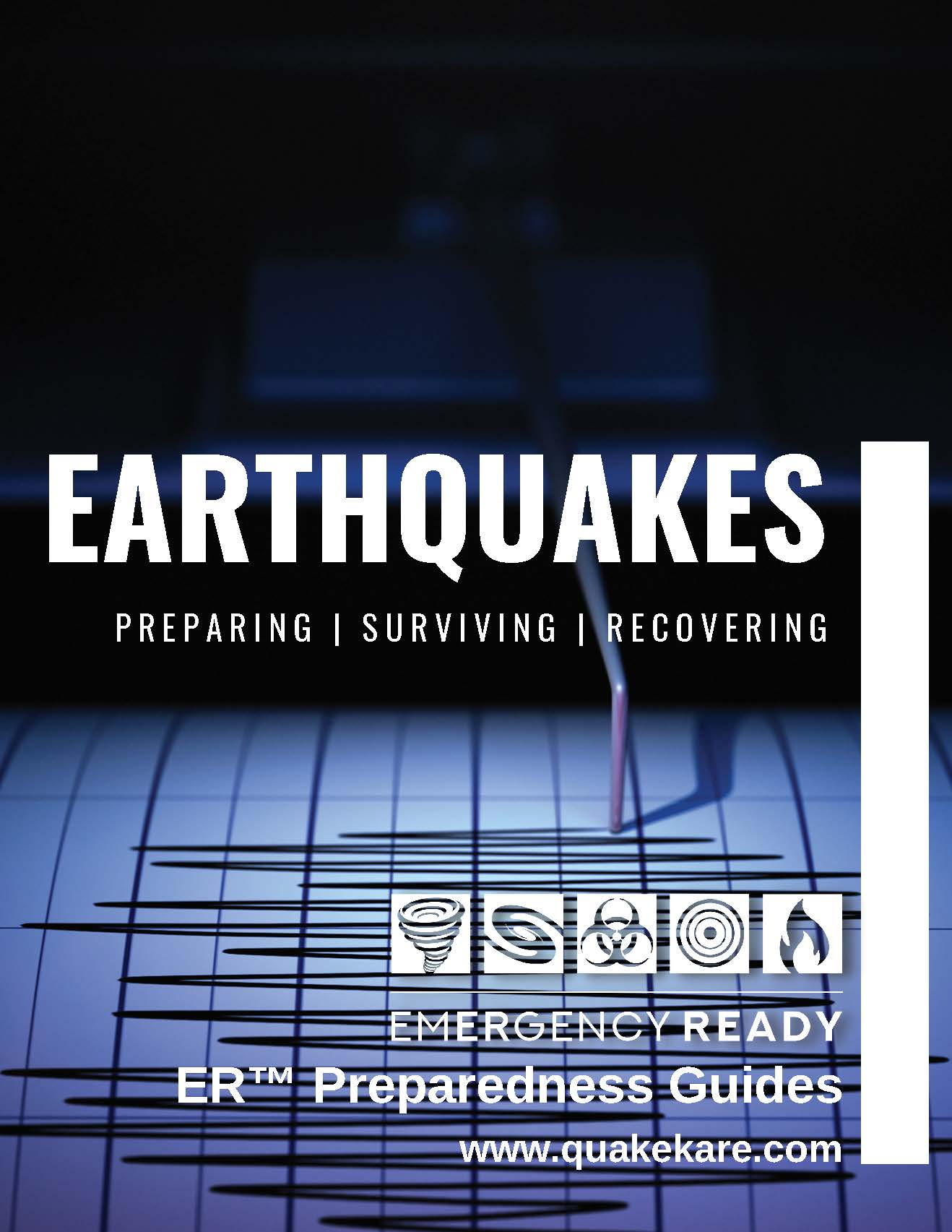Preparing for an Earthquake
What to do Before, During, and After
EARTHQUAKE PREPAREDNESS
Authorities are ready to help if the “big one” happens, so why do you need to be prepared? There are many factors that play a role in being rescued Including the physical location of the disaster and how widespread the devastation. Mobilizing search and rescue efforts and adequately preparing shelters with supplies of food, water and hygiene products takes time and personnel. Both of which might be short during a major disaster. Until help can arrive, self-sufficiency is key to your comfort and survival in the days immediately following the event and self-sufficiency will only result from advanced preparation.
Preparing for a major earthquake begins by building or purchasing Earthquake Emergency Kits. Your earthquake survival supplies should be stored in locations you most frequent such as your home, vehicle and office. Earthquakes occur without warning thus increasing the probability that you might be on the road or at work. Store a Bucket Survival Kit in your home for sheltering-in-place. Keep a Backpack Survival Kit in your car for evacuations/roadside emergencies and stash an individual earthquake kit in your office or classroom. Keep your earthquake preparedness kits in an easily accessible location. In addition, prepare a separate kit for your pets including an emergency supply of food, water and essential items and medications.
WHAT TO DO BEFORE AN EARTHQUAKE
In this section you will learn essential steps you should take before an earthquake strikes. We will help you identify which earthquake kit and supplies you need along with other important earthquake preparedness steps such as securing potential hazards in the home. Click on the links below for additional information.
- PURCHASE EARTHQUAKE KITS AND SUPPLIES. You can either assemble your own kit or buy an earthquake kit designed by emergency preparedness experts. Regardless, your kit should contain the essential supplies needed to shelter-in-place or evacuate after an earthquake. Reference our Earthquake Kit and Supply Checklists for the home, car, school, and office to ensure your kits are properly outfitted.
- CUSTOMIZE YOUR EARTHQUAKE KIT. Your survival kit should include custom items such as prescriptions and other daily necessities that you may need. For help preparing individuals with disabilities for an earthquake, refer to the QK blog post "How to Help People with Disabilities and Other Special Needs Prepare for Disasters."
- REPLACE EXPIRED ITEMS. Periodically, you may have to replace perishable earthquake supplies such as food, water and medical items. Check out our blog "Maintaining Emergency Rations" for information on expiration dates. We also offer ER™ Easy Replacement Kits to help keep kit maintenance more cost and time effective for you.
- MAKE AN EARTHQUAKE PREPAREDNESS PLAN. Your earthquake preparedness plan should outline evacuation routes and reunion locations. It should also include an out-of-state contact person's name and number, the location of your emergency supplies and other pertinent information.
- SECURE HAZARDS. Risk-reduction experts can help eliminate hazards throughout your home, workplace, and school. This service has proven to greatly reduce your risk of injury or death following the next earthquake or other disaster.
WHAT TO DO DURING AN EARTHQUAKE
When the earth starts to shake, your actions could directly result in survival or serious injury. It is imperative you learn what to do during an earthquake if you are at home, work, school or on the road. There are specific actions that earthquake preparedness experts suggest such as to "Drop, Cover, and Hold On". These simple steps have been known to save lives and reduce your risk of death or injury. During earthquakes, drop to the floor, take cover under a sturdy desk or table, and hold on to it firmly. Be prepared to move with it until the shaking stops.
WHAT TO DO AFTER AN EARTHQUAKE
The days following a catastrophic earthquake can be just as dangerous as the seismic event itself. Learn what you can do to survive after an earthquake:
- CHECK FOR INJURIES AND DAMAGE. One of the first things you should do following a major disaster is to check for injuries and damages that need immediate attention. Make sure you are trained in first aid and in preliminary damage assessment techniques. You should be able to administer basic first aid and to identify and avoid hazards such as damaged gas, water, sewage and electrical lines. Use an emergency gas wrench to turn off the gas in your home if you smell a gas leak.
- COMMUNICATE AND START THE RECOVERY PROCESS. Following a major disaster, communication will be an important step in your recovery efforts. The addition of a solar/hand-crank powered radio can provide you with important information, safety advisories and evacuation notices. If your home is damaged, contact your insurance agent right away to begin your claims process.

